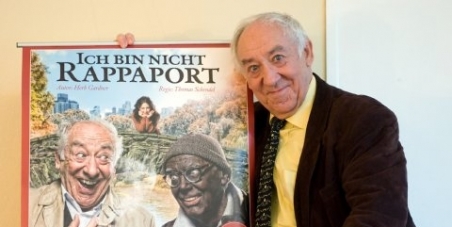A Spectrum From Slaves to Saints (Art Review)
The New York Times
2012-11-08
Holland Carter, Staff Art Critic
 |
| “The Three Mulattoes of Esmereldas” (1599) is one of the works in “Revealing the African Presence in Renaissance Europe,” at the Walters Art Museum in Baltimore. More Photos |
‘African Presence in Renaissance Europe,’ at Walters Museum
BALTIMORE — In a fall art season distinguished, so far, largely by a bland, no-brainer diet served up by Manhattan’s major museums, you have to hit the road for grittier fare. And the Walters Art Museum here is not too far to go to find it in a high-fiber, convention-rattling show with the unglamorous title of “Revealing the African Presence in Renaissance Europe.”
Visually the exhibition is a gift, with marvelous things by artists familiar and revered — Dürer, Rubens, Veronese — along with images most of us never knew existed. Together they map a history of art, politics and race that scholars have begun to pay attention to — notably through “The Image of the Black in Western Art,” a multivolume book project edited by David Bindman and Henry Louis Gates Jr. — but that few museums have addressed in full-dress style.
Like the best scholarship, the Walters show, organized by Joaneath Spicer, the museum’s curator of Renaissance and Baroque art, is as much about questions as answers, and makes no bones about that. Many wall labels begin with an interrogative, suggesting that a museum visitor’s reading of a particular image carries as much weight as the curator’s…
…Being a domestic slave in urban Europe was not necessarily a lifelong condition. (The situation was very different on New World plantations.) Slaves could be freed by owners and take up independent professions. The two black men, one young, one older, in a pair of fleet chalk drawings from around 1580 by Paolo Veronese might have worked as his assistants or apprentices, much as the former slave and mixed-race painter Juan de Pareja did in Velázquez’s studio in Madrid.
De Pareja went on to have a painting career of his own, though he is largely remembered as the subject of one of Velázquez’s most magnificent portraits. But in general the names of black sitters in Renaissance paintings — and, no doubt, of black artists — are lost.
Who is, or was, the slightly stunned-looking man wearing drop earrings, a gold chain and pearl-encrusted cap in “Portrait of a Wealthy African,” by an unknown 16th-century German or Flemish artist? Or the regal-looking personage, head swathed in a milk-white turban, in an oil sketch whipped up on a sheet of repurposed accounting paper by Peter Paul Rubens?
Rubens’s sitter is so attractive, we’d love to know his story. And we’d especially love to know the story — the true, gossip-free story — behind the sitter in an Agnolo Bronzino portrait whose name has survived. He’s Alessandro de’ Medici, who ruled Florence for seven years before being assassinated in 1537, and who is thought by historians to have been the illegitimate child of a pope-to-be, Clement VII, and a black or biracial woman.
Alessandro’s dark skin was remarked on by contemporaries, who nicknamed him Il Moro (the Moor), a generic term for African in 16th-century Italy. In Bronzino’s painting the subject’s complexion is inconclusively ruddy. But another portrait, this one of the ruler’s young daughter Giulia, has been cited by some scholars, who point to the child’s black facial features, as confirmation of Alessandro’s ethnic heritage.
Together these portraits probably attest to the reality of African DNA flowing through Medici blood, and through the very center of the European High Renaissance. But they are at least as interesting for the reactions they have provoked. Until recently art history has ignored, denied or at best tiptoed around their racial content, just as it has skimmed over the black presence in Europe as a whole. The Walters exhibition not only asserts that presence, but positions it as a contributing factor to a crucial moment in the forming of European cultural identity…
Read the entire article here. View the slide show here.







